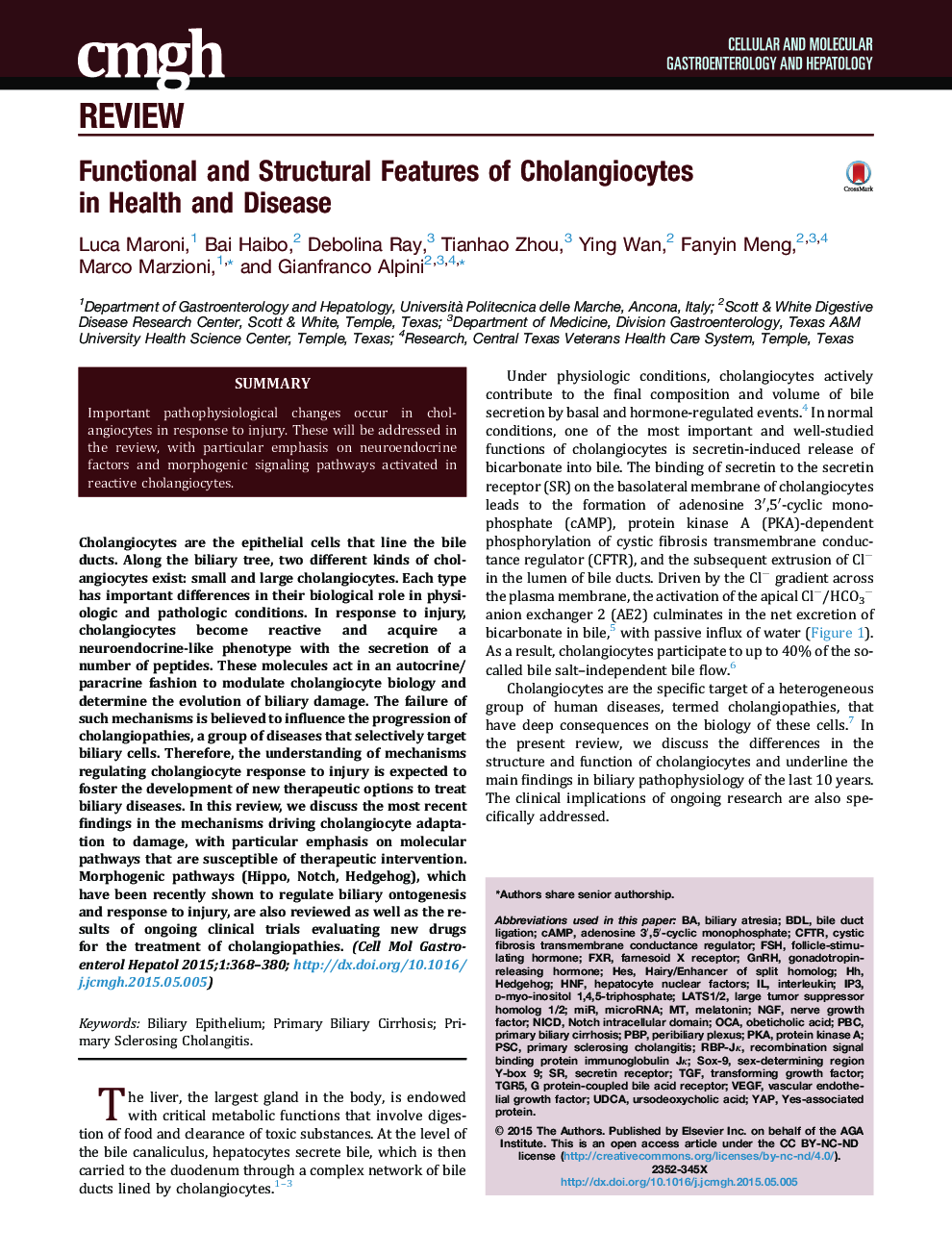| Article ID | Journal | Published Year | Pages | File Type |
|---|---|---|---|---|
| 2041707 | CMGH Cellular and Molecular Gastroenterology and Hepatology | 2015 | 13 Pages |
Cholangiocytes are the epithelial cells that line the bile ducts. Along the biliary tree, two different kinds of cholangiocytes exist: small and large cholangiocytes. Each type has important differences in their biological role in physiologic and pathologic conditions. In response to injury, cholangiocytes become reactive and acquire a neuroendocrine-like phenotype with the secretion of a number of peptides. These molecules act in an autocrine/paracrine fashion to modulate cholangiocyte biology and determine the evolution of biliary damage. The failure of such mechanisms is believed to influence the progression of cholangiopathies, a group of diseases that selectively target biliary cells. Therefore, the understanding of mechanisms regulating cholangiocyte response to injury is expected to foster the development of new therapeutic options to treat biliary diseases. In this review, we discuss the most recent findings in the mechanisms driving cholangiocyte adaptation to damage, with particular emphasis on molecular pathways that are susceptible of therapeutic intervention. Morphogenic pathways (Hippo, Notch, Hedgehog), which have been recently shown to regulate biliary ontogenesis and response to injury, are also reviewed as well as the results of ongoing clinical trials evaluating new drugs for the treatment of cholangiopathies.
